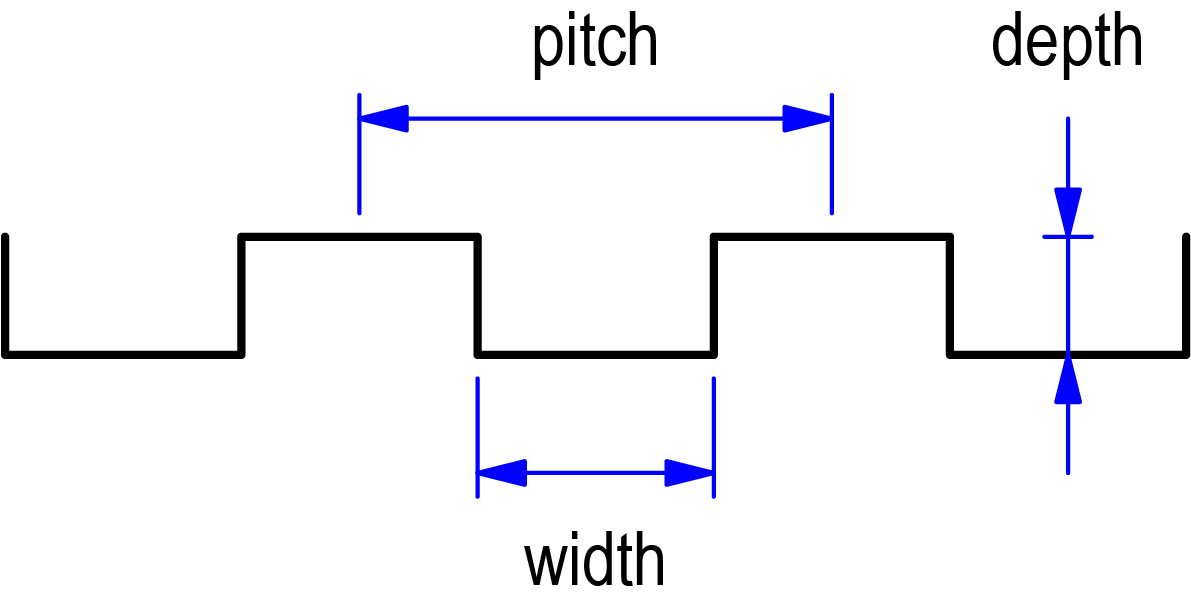INTRODUCTION: Concentrated polymer brushes (CPBs) [1] have been extensively studied in tribological fields because of their ultra-low frictional properties. By applying them to sliding surfaces, attempts are being made to improve the lifetime and efficiency of various mechanical systems. The authors utilized a parallel-grooved glass plate as a substrate, on top of which a CPB was formed, and found that the surface texturing had an influence on the lubricity and durability of the CPB.
MATERIALS: A poly(methylmethacrylate) CPB (PMMA-CPB) was prepared on glass disks by living radical polymerization, where four types of parallel grooves were prepared on the glass disks as surface texturing. The shape and size of the parallel grooves are shown in Figure 1 and Table 1, respectively, termed as S0 to S3, where S0 means a flat surface with no grooves. The thickness of PMMA-CPB in a dry condition was approximately 0.8 μm, while the thickness of PMMA-CPB swelled by a good solvent (e.g., an ionic liquid MEMP-TFSI (Nisshinbo Holdings, Japan)) was approximately twice as thick as the thickness in the dry condition.
METHOD: Friction measurements of PMMA-CPB swelled by MEMP-TFSI were performed in a ball-on-disk configuration using UMT TriboLab (Bruker, USA). The ball was made of glass with a diameter of 10 mm. The disk was made of glass with a diameter of 35 mm and a thickness of 2 mm. The contact between the ball and the disk was lubricated by MEMP-TFSI, where its temperature was controlled at 40°C. The normal load was 8 N and the rotational speed was 10 rpm, where the radius of circular tracks was in a range from 5.0 to 12.5 mm.
RESULTS AND DISCUSSION: Figure 2 shows temporal changes in the friction of PMMA-CPB swelled by MEMP-TFSI formed on the glass surfaces with parallel grooves. As a reference, let us first focus on the results for S0 with no grooves. We find that every test started with an ultra-low friction (appearing to be nearly zero in this horizontal scale), while the value of the friction suddenly rose to a few newtons after some sliding duration of a few minutes, which means that the PMMA-CPB was broken down by sliding. On the other hand, let us next focus on the results for S3 with fine parallel grooves. We find that in all tests, the friction kept the ultra-low value over four hours, which means that the parallel

Figure 1 – Shape of parallel grooves.
Table 1 – Size of parallel grooves.
|
|
width [μm]
|
pitch [μm]
|
depth [μm]
|
|
S0
|
flat with no grooves
|
|
S1
|
500
|
1000
|
0.5
|
|
S2
|
50
|
100
|
|
S3
|
5
|
10
|